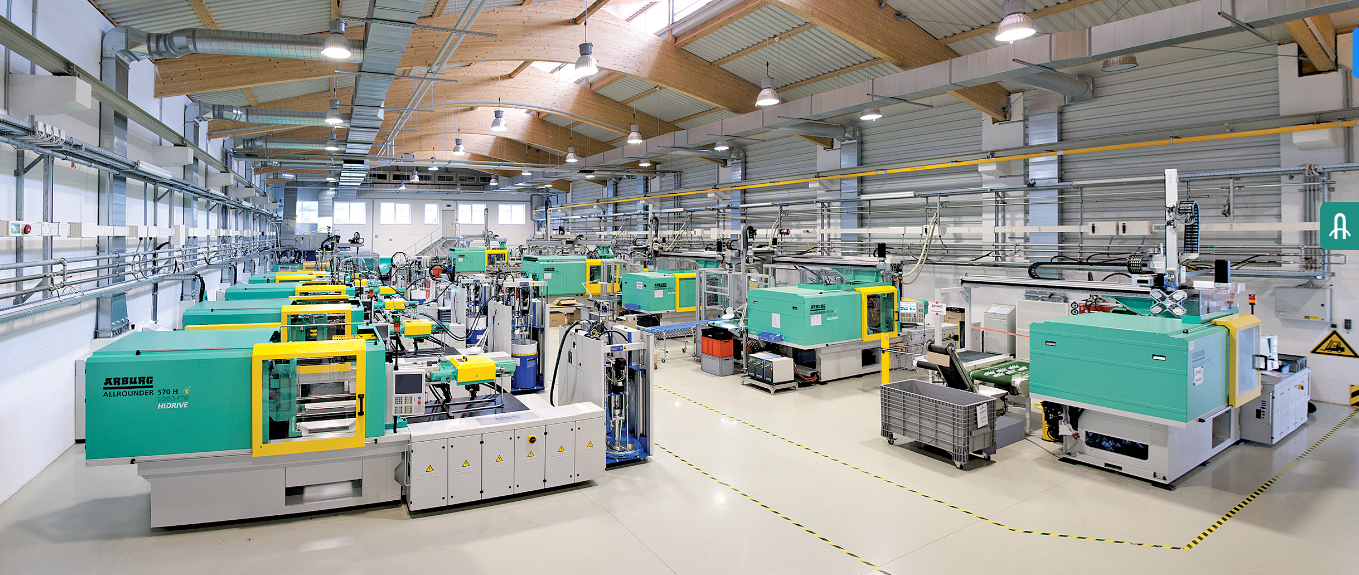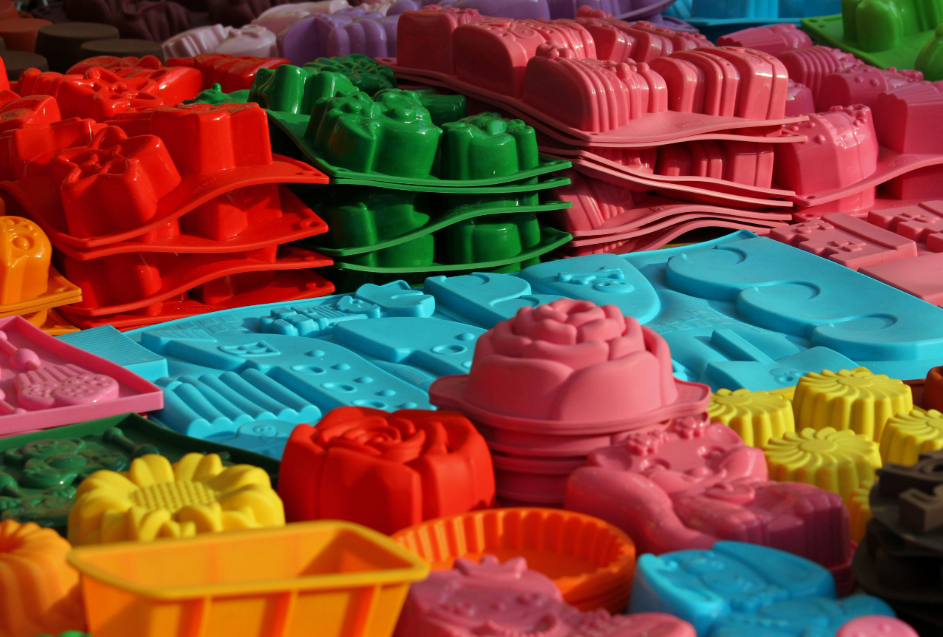Silicone molds are versatile tools used creatively. From baking to crafting, they offer endless options. They shape cupcakes, muffins, and intricate cake designs. DIY lovers craft soap, candles, and resin with them. Artists create concrete planters, polymer clay jewelry, and more. Silicone molds make ice cubes, chocolates, and jelly treats. They’re non-stick, easy to clean, and freezer-friendly. Whether you cook or craft, silicone molds are helpful companions.
Silicone Mold: What Is It?
A silicone mold is a flexible, rubbery container used for shaping various materials. It’s typically made of silicone, a durable and heat-resistant material. These molds come in different shapes and sizes, allowing you to create intricate designs. They’re commonly used in baking and crafting.
To use one, just pour your liquid or semi-liquid mixture, like melted chocolate or soap, into the mold. Once it cools or sets, you can easily pop out the molded item. Silicone molds are great because they’re non-stick, making the release process simple.
They’re reusable and easy to clean; a bit of soap and water usually does the trick. Whether you’re making chocolates, candles, or even mini cakes, silicone molds are your handy helpers, adding fun and creativity to your projects.

What Are Silicone Molds Used For
Silicone molds are versatile tools used in various creative and practical applications. Here’s how they come in handy:
Baking Delights: In the kitchen, silicone molds shine as they withstand high temperatures. They’re perfect for making cupcakes, muffins, and even intricate cake designs.
Chocolates and Candies: Crafting homemade chocolates or gummies is a breeze with silicone molds. The flexible material makes it easy to pop out treats intact.
Ice Cubes with a Twist: Create fun-shaped ice cubes for parties or drinks with silicone molds. They add a touch of uniqueness to any beverage.
Soap Crafting: Making custom soap bars becomes simple. The mold’s flexibility allows for intricate shapes and easy unmolding.
Candle Creations: Crafting candles gets exciting as silicone molds enable you to shape your candles in various forms, from simple to ornate.
Resin Art: For DIY enthusiasts, silicone molds are excellent for creating resin jewelry, keychains, and decorative items.
Concrete and Plaster Crafts: Artists and decorators use silicone molds to produce concrete planters, plaster ornaments, and more.
Jelly and Pudding Delights: These molds turn ordinary desserts into eye-catching treats. Kids and adults alike love the playful shapes.
Miniature Models: Scale model enthusiasts find silicone molds helpful for creating small details and parts.
Fondant Fun: Decorating cakes with fondant becomes effortless when using silicone molds for delicate decorations.
Clay Creations: Artists use these molds to shape polymer clay into intricate designs for jewelry and decorations.
Cocktail Garnishes: Elevate your cocktails with fruit or herb garnishes molded into appealing shapes.
Bath Bombs: Crafting spa-worthy bath bombs at home becomes simple with silicone molds.
Casting and Sculpting: Sculptors find these molds handy for casting small sculptures or replicating intricate details.
Educational Tools: Teachers use silicone molds to create models for science experiments and demonstrations.
Is Silicone Mold Better Than Plastic?
Silicone molds are often considered better than plastic molds for several reasons. Silicone is heat-resistant, making it suitable for baking and cooking at higher temperatures. Unlike plastic, silicone is flexible, allowing easy removal of molded items. Silicone’s non-stick nature reduces the need for greasing, unlike some plastic molds. It’s also safer as it doesn’t release harmful chemicals when exposed to heat. Silicone molds have durability and allow countless reuses, reducing waste. However, plastic molds might be more affordable and come in various shapes. Overall, silicone’s versatility, safety, and longevity make it a preferable choice for many.
Advantages of Silicone Molds
silicone molds offer several advantages that make them a popular choice for various applications:
Heat-Resistant: Silicone withstands high temperatures, perfect for baking and cooking purposes.
Flexibility: The flexible nature of silicone makes it easy to release molded items without hassle.
Non-Stick Properties: Silicone’s smooth surface reduces the need for greasing, promoting easy removal.
Safety: Unlike some plastics, silicone doesn’t release harmful chemicals when exposed to heat or food.
Durability: Silicone molds are sturdy and resistant to wear, ensuring longevity and multiple uses.
Versatility: They come in various shapes and sizes, suitable for a wide range of creative projects.
Easy to Clean: Silicone’s non-porous surface is easy to clean with soap and water.
Freezer-Friendly: Silicone molds enable freezing items without cracking or warping.
Reusable: Because they are durable, silicone molds enable multiple uses, reducing waste.
Detailed Designs: Intricate designs are possible due to the flexibility and precision of silicone molds.
How to Make a Silicone Mold?
Here’s a step-by-step guide on how to make a silicone mold:
Choose Your Object: Pick the item you want to create a mold of, ensuring it’s clean and dry.
Prepare the Work Area: Set up a clean and organized workspace to prevent messes.
Gather Materials: Collect silicone mold-making kit, mixing containers, stirring sticks, and release agent if needed.
Create a Mold Box: Place your object in a box slightly larger than the item and secure it.
Mix Silicone: Follow the instructions on the kit to mix silicone base and catalyst thoroughly.
Apply Release Agent: If required, apply a thin layer of release agent on the object’s surface.
Pour Silicone: Slowly pour mixed silicone into the mold box, covering the object.
Remove Air Bubbles: Gently tap the box to release trapped air bubbles.
Cure and Harden: Let the silicone cure according to the kit’s instructions, usually for several hours.
Demold the Object: Once cured, carefully remove the mold box and extract the object.
Trim and Clean: Trim excess silicone and clean the mold if needed.
Mix and Pour Second Half: If making a two-part mold, repeat steps 5-11 for the second half.
Secure the Halves: Join the two halves, ensuring they fit perfectly.
Pour Casting Material: Pour your chosen material into the mold and let it set.
Demold the Final Piece: Once cured, carefully remove the casting from the mold.

FAQs
Can I use silicone molds for baking?
Absolutely! Silicone molds are heat-resistant and great for baking cupcakes, muffins, and more.
How do I clean silicone molds?
Cleaning is easy! Just use soap and water, or place them in the dishwasher.
Are silicone molds reusable?
Yes, they have durability and allow multiple uses, reducing waste and saving money.
Can I use silicone molds for crafts?
Of course! Silicone molds are fantastic for making candles, soap, resin crafts, and more.
Do I need to grease silicone molds?
Generally no, silicone’s non-stick nature means greasing is often unnecessary for easy release.

